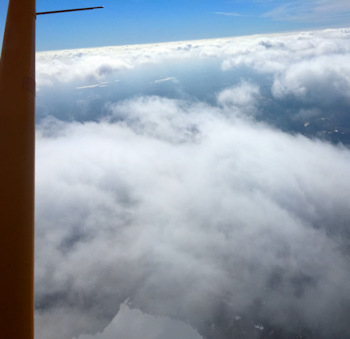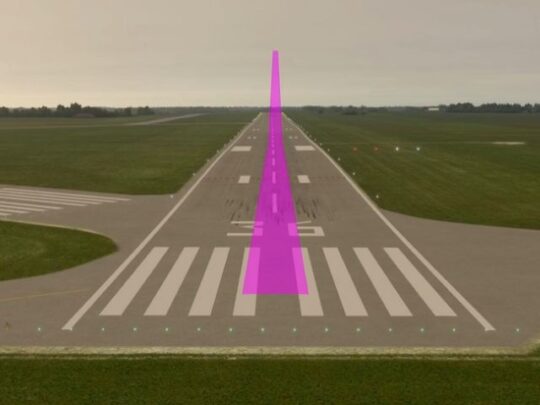Subscriber question:
"As a VFR-only pilot in the U.S. can I fly over a cloud layer as long as I remain clear of clouds?" - Kyle N.
John:
 “The short answer is yes. You may legally fly on top as long as you can maintain the appropriate VFR cloud clearances. Is it a good idea? I’ll talk about that in a bit.
“The short answer is yes. You may legally fly on top as long as you can maintain the appropriate VFR cloud clearances. Is it a good idea? I’ll talk about that in a bit.
Let’s back up and clarify some terms. Flying VFR over a cloud layer is what is known as VFR over-the-top. VFR over-the-top is very different from VFR-on-top, many people incorrectly use the two terms interchangeably. VFR-on-top is conducted by an instrument-rated pilot on an IFR flight plan. It allows the pilot to change altitudes, provided VFR cloud clearances are maintained.
VFR over-the-top, on the other hand, does not require an instrument rating or any kind of clearance or flight plan. The only regulatory restriction is that student pilots are not allowed to fly above a cloud layer without ground reference.
VFR over-the-top can be a very useful tool to get above a cloud layer instead of flying in haze or restricted visibility below the clouds. But remember that you have to come back down at some point. Part 91 specifies cloud clearances below 10,000 feet MSL as 500 feet under, 1000 feet over, and 2000 feet horizontal. That pretty much determines the size of the hole you have to find to get back down. To get 2000-foot horizontal clearance means you have to find a hole that is at least three-quarters of a mile across, which is a pretty big hole. We’re not talking about a break in the clouds that allows a quick glimpse of the ground but enough clear air to maneuver while maintaining positional awareness and staying the required distance away from the clouds.
The cloud clearances are designed to allow an IFR aircraft exiting the clouds sufficient time for both of you to see and avoid. Consider that a jet climbing at 4000 feet per minute will climb the 1000 feet between the cloud tops and you in 15 seconds. That’s not a lot of time to see and avoid an aircraft climbing at 250 knots.
VFR over-the-top should be used like any other tool in your aviation tool bag. It can be very useful but requires careful planning, continuous weather monitoring and constantly keeping a Plan B if things don’t go as planned. If the holes start disappearing, make sure you leave yourself an out so you can get down under those clouds. You may have to do a 180 to find an area behind you.”
Note: The rules described above refer to U.S. operations only. In Canada, a separate VFR-OTT rating is required for non-Instrument rated pilots to fly above the clouds. Other countries may have different rules. Feel free to share the specific rules in your country using the comments below.
Are you comfortable flying VFR Over-The-Top?

